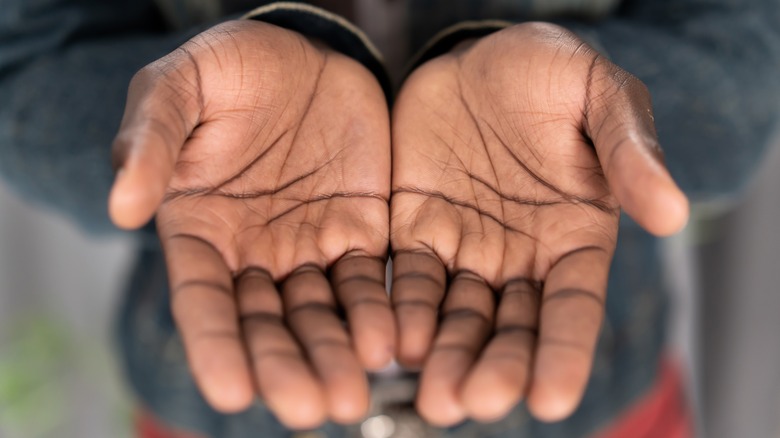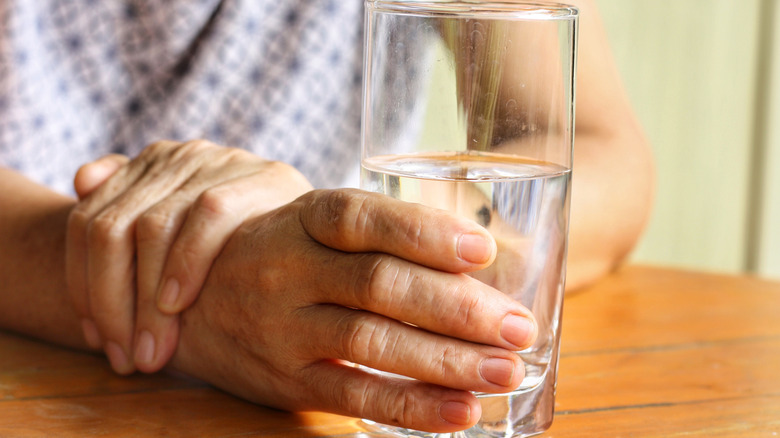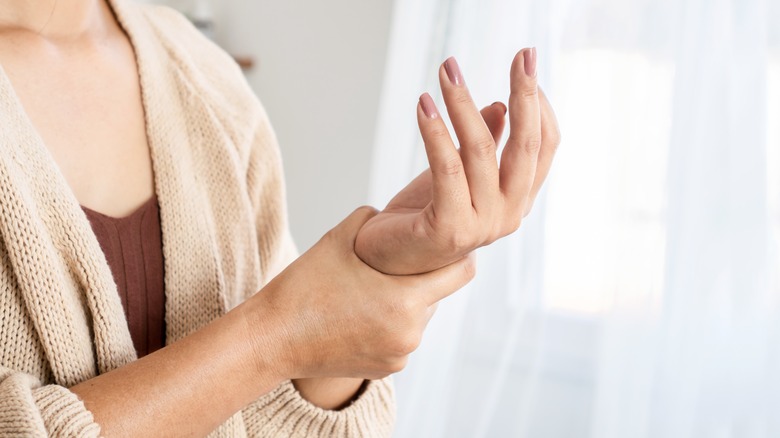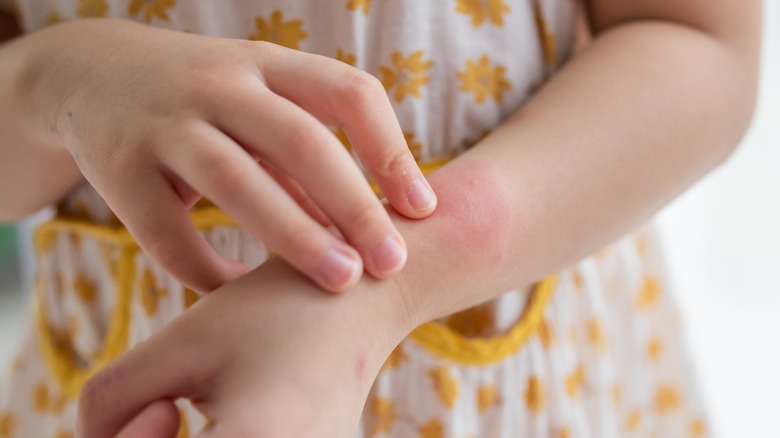Warning Signs From Your Hands You Shouldn't Ignore
Hands can tell a lot about your overall well-being. According to Stanford Medicine, doctors and healthcare professionals are taught to begin the examination of a patient by observing their hands. Typically, they take the patient's right hand and examine it thoroughly, using both of their hands. They may look at the nails, bones in the fingers, wrists, and skin appearance to deduce your health, per Stanford Medicine.
A 2003 report published in BMJ Journals included data that was collected from 197 patients who came in for a check-up or surgery at a U.K. healthcare facility. They discovered that the hands of 44% of the participants showed signs of some unhealthy habits or occupational health, such as working in coal mines or smoking. This further elucidates how the hands can help doctors make more informed and proper diagnoses.
What could shaky hands mean?
If your hands tremble a lot, one possibility could be a neurological disease, such as Parkinson's disease, according to Medical News Today. Parkinson's disease is a condition where the brain cells that control movement are damaged. When these cells die, the brain is unable to produce dopamine, which is essential for coordinating nerve and muscle cells (via The American Association of Neurological Surgeons). This loss in dopamine can result in involuntary movement such as tremors in the hands.
Other neurological conditions that can cause shaky hands include multiple sclerosis (MS) and dystonia (per Medical News Today). Multiple sclerosis is an autoimmune disease that affects the central nervous system and can cause a range of symptoms, including tremors. Dystonia is a disorder that causes involuntary muscle contractions, which can lead to shaking. If you have any other symptoms along with your shaky hands, such as weakness, stiffness, or balance problems, you should see your doctor so they can rule out any serious underlying conditions.
You may also experience shaky hands after having a stroke or going through a traumatic brain injury (via Medical News Today). Both of these events can damage the parts of the brain responsible for controlling muscle movement. If you have any other symptoms along with your shaky hands, such as paralysis, difficulty speaking, or vision problems, it's important to seek medical attention right away. Harvard Health Publishing suggests there's no such thing as a small stroke and early medical interventions are critical.
What could bumps or spots mean?
If you have painful, discolored bumps that appear on your fingertips or toes, also known as Osler nodes, it could be a sign of endocarditis (via Mayo Clinic). Endocarditis is a heart condition indicative of bacteria traveling to the heart via the bloodstream. This potentially fatal infection can put some at greater risk than others, including those who have an artificial heart valve, congenital heart disease, hypertrophic cardiomyopathy, damaged heart valves, or a prior endocarditis infection, per the National Health System (NHS).
Other symptoms of endocarditis that appear on the hands are flattened red, brown, or purple spots on the palms, also known as Janeway lesions, per Mayo Clinic. These spots, unlike the Osler nodes, aren't usually painful. Additionally, thin streaks of blood may appear under your nails, according to the (NHS). It's important to seek medical attention immediately if you think you have endocarditis. If gone untreated, it can potentially lead to life-threatening conditions such as heart failure or stroke.
What could blisters or rashes on your hands mean?
Sudden blisters or rashes on hands can also be signs of an underlying condition. According to the Mayo Clinic, dyshidrosis eczema may lead to the growth of pus-filled blisters on your hands or fingers. These blisters may become inflamed and cause itching due to dryness. Although they might disappear within a few weeks, they can recur. The primary treatment for dyshidrosis is applying ointments or creams to soothe the irritation. According to the Mayo Clinic, some doctors might recommend corticosteroid pills or injections for cases that fail to heal through creams.
Another reason for the appearance of blisters is a nickel allergy, per Health. "Nickel is especially high in beans, chocolate, peanuts, soy, oatmeal, and granola," Dr. Salma Faghri de la Feld, a professor of dermatology at Emory University, told Health. These are some of the most common allergic compounds that may trigger nickel allergic reactions.
Per Medical News Today, a rash on your hands could also be a symptom of psoriasis. You might notice raised, scaly patches on the hands, along with intense inflammation. Other times, rashes may occur because of lichen planus, a disease that causes irritation and painful purplish bumps on hands, wrists, or nails (via Mayo Clinic).




